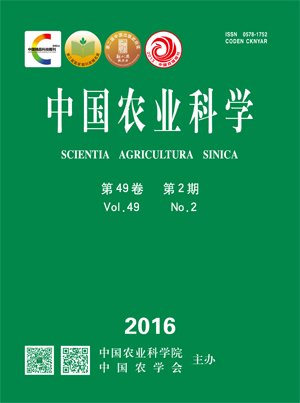-
Effect of Phosphorus Levels on Growth, Morphological Characteristics and Leaf Element Contents of Juglans sigillata Dode Seedlings
- ZANG Cheng-feng, FAN Wei-guo, PAN Xue-jun
-
Scientia Agricultura Sinica. 2016, 49(2):
319-330.
doi:10.3864/j.issn.0578-1752.2016.02.012
-
 Abstract
(
540 )
Abstract
(
540 )
 HTML
(
2 )
HTML
(
2 )
 PDF (3824KB)
(
490
)
PDF (3824KB)
(
490
)
 Save
Save
-
References |
Related Articles |
Metrics
【Objective】The objective of this study was to explore the effect of different phosphorus levels on the growth, morphological characteristics and element absorption of Juglans sigillata Dode seedlings, and provide a scientific foundation for the determination of soil phosphorus diagnostic criteria and phosphorus application for young trees.【Method】Using Juglans sigillata Dode seedlings as materials, the metamorphic rocks of acid yellow soil parent material development for cultivating soil,the soil culture experiments were employed to study the effect of different phosphorus levels on the growth, biomass, root-shoot ratio, root morphology characteristics and leaf element contents. 【Result】 Under the condition of 5, 25, 45, 65, 85, 105 and 125 mg·kg-1 effective phosphorus levels, the plant total biomass, root and shoot biomass decreased when the phosphorus nutrition level was lower than 45 mg·L-1 or higher than 45 mg·L-1. Under the condition of 45 mg·kg-1 phosphorus nutrition level, the root development of Juglans sigillata Dode root was the best and the plant of fresh and dry weight reached maximum, 183.07 g/plant and 109.84 g/plant. Under the condition of 125 mg·kg-1 phosphorus nutrition level , root system growth was the worst and plant total biomass was the minimum, only 66.93 g/plant and 40.16 g/plant. Phosphorus levels higher than 45 mg·kg-1, with the increase of the phosphorus levels on plant growth inhibition enhanced obviously, the inhibitory effect was more obvious than the low phosphorus treatment. The root-shoot ratio of the plant with 5 mg·kg-1 phosphorus processing one of the biggest was 1.34, with 45 mg·kg-1 deal with the minimum of only 1.07. In the 5, 25 and 45 mg·kg-1 of phosphorus processing , with the increase of phosphorus levels of the plant height, aboveground base diameter, total leaf area, root length, total surface area, root volume, root average diameter, total root number, root fractal dimension number, root length, lateral root length, lateral root number, whole plant root length density and root mass density increased obviously, the above index of phosphorus levels higher than 45 mg·kg-1 processing decreased significantly, with 125 mg·kg-1 phosphorus levels to a minimum. With the phosphorus nutrition level increasing, the elements content of P, Ca, Mg, Mn and Cu increased. With the increase of phosphorus levels leaf N, K, Fe, Zn, and B content and phosphorus supply was on a first increasing and then decreasing trend. When the phosphorus nutrition level was extremely lower or higher than 45 mg·kg-1, the contents of P, Mg, Mn and Cu would be deficient or excessively accumulative. When phosphate levels were higher or lower than 45 mg·kg-1, the absorption of N, K, Fe, Zn, and B elements was significantly lower.【Conclusion】In the metamorphic rock the parent material development of acid yellow soil, the condition of soil phosphorus levels that reached about 45 mg·kg-1 was most conducive to Juglans sigillata Dode seedlings growth and uptake of nutrient elements, obviously improved root morphological characteristics, phosphorus levels too low or too high had obvious inhibitory effects on the growth of the plant root system and above ground growth, high phosphorus levels had an adverse effect on plant growth and was more obvious than the low phosphorus condition.









